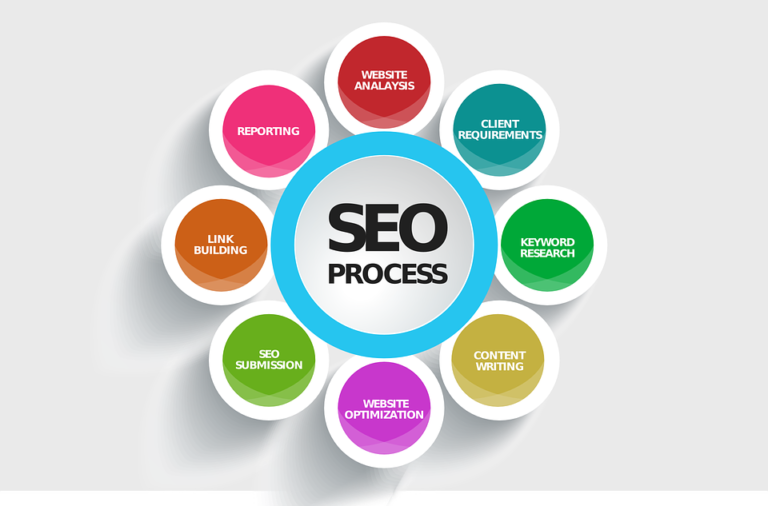7 Mistakes That Are Killing Your Business
What does your website say about your business?
Do you have the 7 mistakes that are killing your business ? Does it send a clear signal that you’re a thriving local business who cares about customers? Or would Horatio Caine show up with a not-so-clever tag and bag quip?
These 7 website mistakes tell potential customers your company has one foot in the grave. But, stay tuned. It’s not too late to bring Lazarus back to life.
1. DIY Website
We’ve all seen the commercials. For just $29.99 a month, you can build a “professional looking website” with just a few simple clicks. Sounds tempting, doesn’t it? With DIY website, you get what you paid for. You and unless your a web designer or developer your going to run into trouble.
What the ads don’t tell you is you’re going to spend countless hours trying to figure out their app, wondering what to say and where to put stuff, and unlocking complicated mysteries like how to use your own domain. After all that work, you’ll end up with a crappy site that can’t be found in the search engines and has the vendor’s logo clearly visible in the footer.
Effective website design requires far more than slapping up a logo and some pics you snagged off Google. A professional web developer will create a website that:
follows best practices for content, design and layout
can be found with a quick search on any device
makes it easy for customers to do business with you
Hiring a professional seems more expensive up front, but a well-designed website will end up paying for itself. DIY, on the other hand, will cost you time, customers and credibility.
2. Hiring a kid that's good with computers
A common website mistakes we see is trusting some “techie computer guy” with your digital marketing.
Being young and knowing how to text at the speed of light does not qualify someone to communicate your unique story to the masses. Neither does knowing how to fix computers, speak techno-babble or play on social media all day.
Web development involves a specific set of skills. Creating a great website involves code, design, color theory, user experience, image and video editing, photography, copywriting, layout, and marketing communications. It usually takes multiple professionals to do it right.
Yes, there are some highly technical aspects, but one geeky kid will never deliver the results you need.
3. Lack of Focus
Your website and everything on it should have a purpose. Visitors expect to find clear, relevant information within the first few seconds or they move on to the next search result.
Be sure to answer these questions right up front:
- What do you do?
- How does it benefit me?
- What action should I take?
Resist the temptation to post an exhaustive concordance containing every possible tidbit about your business and the owner. Boil it down to the info your customers need to perform the action you want.
What do you sell?
Do you sell hammers? Then you need high quality photos, an accurate description, and a clear way to purchase said hammers. Customers don’t care that your founder has 17 grandkids he likes to play with at the park.
4. Invisible Contact Information
Nothing turns potential customers off like making them jump through hoops to contact a human being.
This one seems to be especially common on e-commerce sites. Business owners buy into this myth that the website will do all the work while they sit back and rake in profits.
We actually had one client say they “didn’t want people calling the store all the time.” What?!?
If Sally needs one question answered before purchasing, by all means make sure she can ask it.
Your phone number should be in the header and/or footer of every single page. You may also include contact forms, social CRM* or live chat, depending on your customer service needs.
5. Designing for the Business Owner
Your website is not about you.
The dedication, passion and vision it takes to run a small business is not the same fuel that drives customers to buy your product or service. The messages, imagery and features that appeal to you do not necessarily appeal to them — and that’s okay.
Your website should be designed from the customer’s point of view. Make peace with the fact that you may not find the language or visual design of your website appealing. This allows you to craft a relevant message that engages buyers where they live.
Quality vs. Preference: Don’t confuse designing for your customers with a design that’s just junk. It’s important to have a quality, well-designed website no matter who you’re trying to reach.
6. Frustrated Mobile User
Over 8 in 10 internet users will use a smartphone to access the web regularly in 2017 (eMarketer). According to Google, those users are 5 times more likely to leave your site if they don’t have a good mobile experience.
So, what’s a good mobile experience?
Don’t make the mistake of redirecting to a low-powered “mobile site.” Removing features or stripping down your design will just frustrate smartphone users. In fact, they’re liable to pull up the desktop site to see what they’re missing. Guess how, they’ll feel when it doesn’t work.
Instead, your website should naturally adapt its layout to accommodate any device. Web developers call this responsive design. You can think of it as responding to customers on whatever device they choose to use.
Before launch, test your website across all major browsers on PC, Mac, Android and iOS devices. If it doesn’t work everywhere, it doesn’t work.
7. Putting Off SEO
Ohh, that shiny new website looks fantastic! The pictures are gorgeous, your layout is spot on and the copy is trimmed to perfection.
You’re done, right? Wrong.
Launching a website without optimizing for search engines is like singing in the shower. You might have a beautiful voice, but no one’s ever going to hear it.
At the bare minimum, make sure each page has a title and description that Google can read. These show up in search results, so it’s also important to make sure they fit within the guidelines and appeal to actual human beings.
You’ll also want to create a sitemap for Google and Bing. This dramatically speeds up the time it takes to get new pages indexed.
These guidelines are the absolute least you should do. For a full guide to SEO best practices, check out these courses on LinkedIn Learning.








